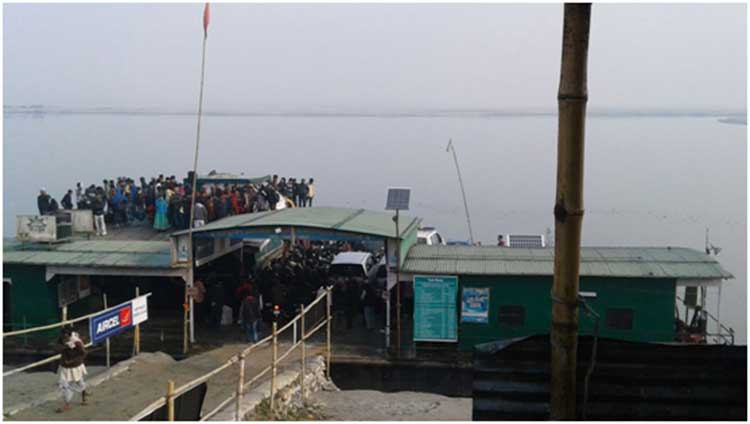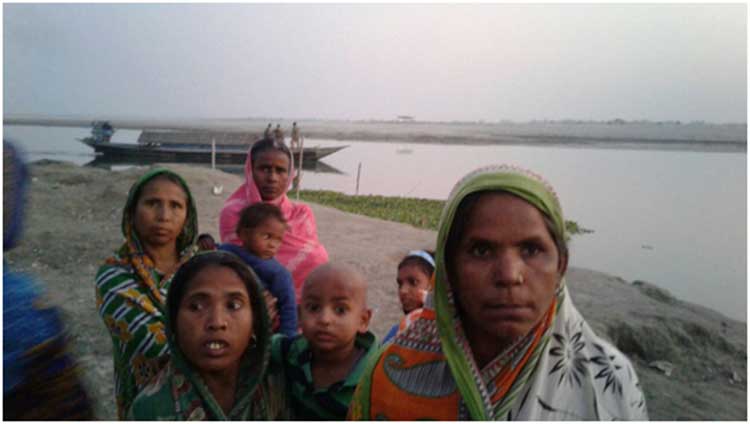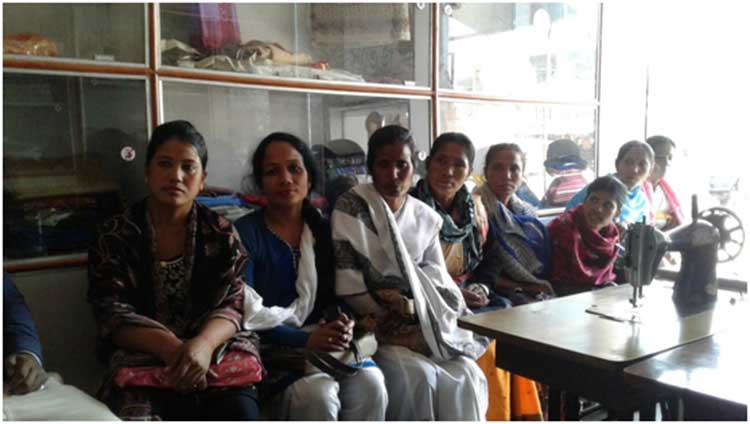Akshat Mishra
Majuli- a picturesque island nestled amidst the mighty Brahmaputra river traversing through the sate of Assam, is proudly holding the tag of being world’s largest freshwater river island. Apart from natural beauty, the island is a home to rare species of flora and fauna making it a biodiversity hotspot and an offbeat tourist destination. It specifically attracts birding aficionados as its fertile floodplains and highly productive wetlands provide an ideal habitat for a plethora of resident and migratory birds (260 species recorded as on date).
Moreover,Majuliboasts a unique amalgamation of distinct cultural heritage being deeply entwined with the mythological legends of Lord Vishnuwhich presently houses 22 Vaishnava Satras(monasteries). It is mind-boggling to see how every day activities of its inhabitants are closely knit to the mystical elements of shamanic spirituality which dictates the karmic action for everyone and make them God-abiding and nature loving individuals.

Pic: © AuthorThe only way to reach this island is hopping into a ferry from Neamati Ghat in Jorhat
Unfortunately, this island is facing the wrath of time, mainly because of the massive bank erosion due to the high turbidity currents of the Brahmaputra that have become more fierce and worrisome for its various indigenous communities since the last two decades. Some geomorphological studies points that interweaved nature of the Brahmaputra coupled with silt and sand strata of the banks are the main cause of erosion.
As per official statistics, satellite imagery shows that from having a 1256 sq km of landmass in 1971, the island has shrunk by more than half which stands at 524.29 sq km as of November 2016. Sadly data further points that like Maldives, this island is facing extinction threats as climate-change induced erratic water flow in the Brahmaputra will result in total submergence ofMajuli in the next 15-20 years.Till date around 67 revenue villages have been completely eroded away by the might Brahmaputra river.
It also raises question on the survival of its indigenous Assamese communities who have carefully carried forward their art, culture, religion and music to the coming generations. It is evident that such scientific predictions about its survival are most likely to cause worry, anguish and fear in the heart of its inhabitants.
“Apart from fishing, we largely rely on agricultural produce on Majuli’s char land for our sustenance. We mostly grow mustard and bao-dhan (rice) a traditional deepwater paddy variety. I used to own 4 bighas of land but now it has been reduced to 3.8 bighas. Also the floods gets in more sand then fertile soil”, says a mid-aged farmer in Kamalabari.
Like this farmer many others in Majuli are living under constant fear of land erosion that has been one of the contributory factors for increased migration rates from this island. Moreover, monsoon season Brahmaputra flooding has also exacerbated the number of internally displaced people (IDPs) in this region, even though there is no official data to prove this displacement trend. Apart form displacement threats, Majuli farmers are quite worried about declining agrarian productivity due to the sand deposits being carried by the turbid waters of Brahmaputra whose particles buries down the fertile layer of soil.

Pic: © Author Women in Majuli being the most vulnerable to displacement because of land erosion
Furthermore, due to constant land-loss many farmers became landless and were forced to live in the embankments in makeshift houses. There are under constant fear of deportation by the State government, as they do not hold any land-rights to reside near the embankment areas.
Jamini Payeng, Founder of Rural Economic Development Society believes that deforestation in the upper Himalayan region of Arunachal Pradesh has brought down huge quantities of sand in the lower riparian areas. This, as such, has worst impacted Majuli, as it has led to rise in Brahmaputra’s riverbed. Also, the haphazard construction of embankments on the upper riparian regions of river Brahmaputra has distorted the natural flow of river and unmonitored flow of floodwater results in extensive erosion of the island.

Pic: © Author Majuli women working in a local boutique in Kamalabari
What’s being done to save the island?
The state government of Assam has put forth Assam State Action Plan on Climate Change (2015-2020). The section on climate change adaption speaks about the initiatives untaken by the government to contain and adapt to floods and erosion. These includes river bank stabilisation, creation of embankments at strategic locations, establishment of a flood warning system, conducting extensive flood modelling studies to study the nature of Brahmaputra, and promotion for cultivation of flood-resilient paddy crops like ‘Boro’. Apart for it the plan also includes construction of adequate number of flood shelters, and other flood mitigation related infrastructure.
The Brahmaputra Board has undertaken flood mitigation measures to save Majuli from erosion. These include construction of boulder spurs, RCC porcupine screen, riverbank stabilisation using geo-textile material and so on. The government claims that because of these restoration interventions, the area of landmass of Majuli Island has increased to 524 sq km in 2016 from 502 sq km in 2004.
Furthermore, Assam’s Department of Environment has also launched Sustainable Action for Climate Resilient Development in Majuli which aims to make this island carbon neutral by 2020 through forestry activities and biodiversity conservation. This plan specifically stresses the importance of adopting bio-engineering means, local community best practices and extensive afforestation techniques to combat the challenges to erosion.
What lies ahead
Even though several restoration interventions have been implemented in the last 15 years but still this vulnerable island has not been able to see drastic recovery rate. Apart from instituional interventions several small ad-hoc projects are eing implemented in this island but nothig drastic is being achieved.
The local communites feel that construction of embankments have worsened the problem of flood and erosion whereas nothing substaintial is being done by the State government mostly during the time of flood. Landless farmers living near the embankments wants to be provided with decent employment opportunites while women desire more helathcare facilities inside the island itself.
Since the rate of land erosion is totally disproportionate to land restoration efforts, only far-sighted engineering and scientifc interventions backed by sound financial funding will be able to solve this mammoth problem of Majuli. This calls for bringning into a common platfrom institutions, civil society organisations, research agencies and local communites together for working towards a common cause of saving Majuli.
No comments:
Post a Comment